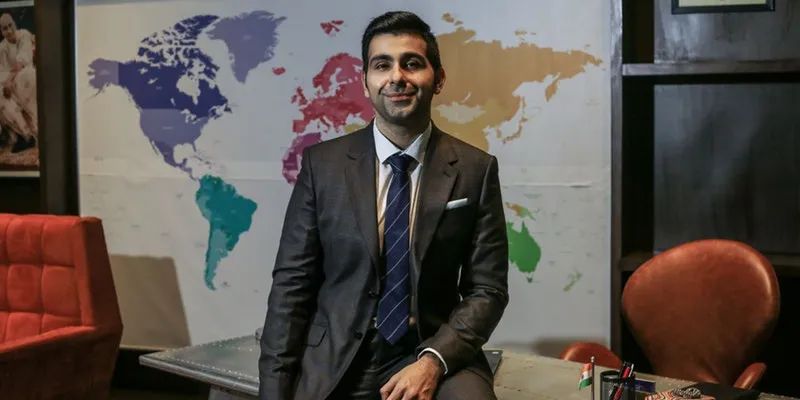How this second-generation entrepreneur revamped five-decade-old Lakhani into a Rs 105 Cr company
When multinational brands entered the Indian footwear market in mid-2000s, 50-year-old Lakhani faded into oblivion. But after rigorous research, Mayank Lakhani revamped the traditional footwear business and made it a Rs 105 crore company in just five years, which now has a retail network of 20,000.

Mayank Lakhani, Director, Lakhani Infinity Footcare Pvt Ltd.
In 1966, Parmeshwar Dayal Lakhani founded Lakhani, a Made in India, premium footwear company that still holds its name in the Indian consumer household.
However, in the mid-2000s, when multinational brands like Nike, Puma, and Adidas entered the Indian footwear market, Lakhani, which once held a major percent of share in the industry, faded into oblivion.
In an interaction with SMBStory, Mayank Lakhani, the second-generation entrepreneur of Lakhani Vardaan, says,
“When MNCs entered India, it was a game-changer for the footwear industry. These big brands outsourced their products made with new machines. However, Lakhani followed a practice of in-house manufacturing that didn’t meet the demand-supply chain. It was difficult to operate in the whole new concept in a jiffy.”
Being in the middle of a slowdown for almost a decade, Lakhani was not operational for three years from 2010. While the group witnessed a whole-new trend in the Indian footwear industry, Mayank did not drag his feet, and instead decided to hit the industry soon by revamping the company’s traditional business model.
Revamping the family business
In 2014, with a borrowed capital of Rs 1 lakh, Mayank started Lakhani Infinity Footcare Private Limited in Sahibabad, Uttar Pradesh.
Coming from a family which was into the business, he knew the essential know-how of the footwear business, which was inculcated in him from childhood.
“Lakhani serves the masses and I wanted to take that legacy forward but with a different approach. I brought in 90 percent outsourced manufacturing, which major big brands follow,” Mayank says.
Bata was also one of the major players in the market back then, which also followed a manufacturing business model. However, with the changing market trends, it switched to approximately 88 percent outsourcing, retaining only a handful of SKUs to be manufactured at its facility, including school shoes.
Mayank initiated the concept of brand sourcing in Lakhani Infinity, where the products were being manufactured by outside suppliers, and the team ensured strict quality inspection and compliance. After receiving positive response from the market, Mayank decided to start a new journey for the brand.
In 2016, the company joined hands with MB Group and made them strategic partners for manufacturing its products. Mayank says, all the products are currently manufactured in the partner’s facility, but products like hawai chappals and PVC shoes are manufactured in Lakhani’s in-house manufacturing unit, which is located in Sahibabad, Uttar Pradesh.

Lakhani pace shoes
The company says it sources the raw material by itself from Delhi/NCR, and the rubber is sourced from South India. Its footwear is priced between Rs 100 and Rs 1,499, and some of its products include sports shoes, canvas shoes, slippers, sandals, bellies, hawai chappals, and other premium-quality footwear.
Mayank says, “We are targeting entire India as a very price-sensitive nation. So, we want to give them the best quality, which they can actually afford.”
Lakhani follows a 90 percent distribution model for sales. The company has over 200 distributors who have a network of approximately 20,000 retailers. The company sells only one to two percent online, and is focussed on running the business in the same zone.
According to a 2018 report on the Indian footwear industry, India produces over 22 billion footwears annually, accounting for approximately 9.6 percent of the total global footwear output per year. The industry is currently dominated by men’s footwear, which contributes close to 58 percent of the total Indian footwear retail market, and is expected to grow at a CAGR of 10 percent by 2020.
Mayank says,
“Lakhani infinity has the potential to reach Rs 500 crore turnover following only the distribution model in India, and once we exhaust this, we may expand and initiate exports.”
The steady growth curve

Lakhani slippers
Within a year of its launch, the company claims to have reached an annual turnover of Rs 10 crore, with an on-ground workforce of only 20. Later, in 2016, the company was able to touch the Rs 10 crore mark, seeing a significant growth.
By 2018, within a span of two years, the company achieved Rs 50 crore turnover and launched new designs and a range of products. The following year, it launched extensive ad campaigns, giving a boost to the brand, and appointed actress Bhoomi Pednekar as its brand ambassador.
In the same fiscal year, the company achieved the highest turnover of Rs 100 crore. At present, it is seeing Rs 105 crore turnover, and aims to reach a milestone of Rs 200 crore by 2021.
Major challenges
Changing the perception of the consumers between the two generations of the business was one of the biggest challenges that Mayank faced to sustain the business. He says,
“The approach towards business, people management, expansion, core values, and particularly technology between two generations could be as distinct as chalk and cheese, yet both have the same goal in mind — to run a profitable and reputed enterprise.”
He further says that with the increase in internet penetration, young entrepreneurs have to constantly keep pace with the ever-changing customer requirements and trends, something the older generation and the older market trend never had to grapple with.
The competition has also increased unlike a decade before, and an entrepreneur has to be on their toes to keep abreast with what international brands, as well as a host of domestic brands, are doing at any given time.
The way ahead
The company aims to introduce many innovative products with the underlining principle of comfort and modernity. This will facilitate better customer care through innovation, which is in line with the company’s philosophy of dynamic development.
In future, the company plans to launch a range of sportswear and introduce kids footwear to grow the brand.
(Edited by Megha Reddy)









